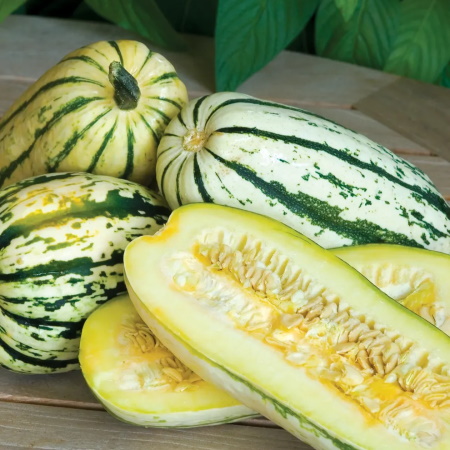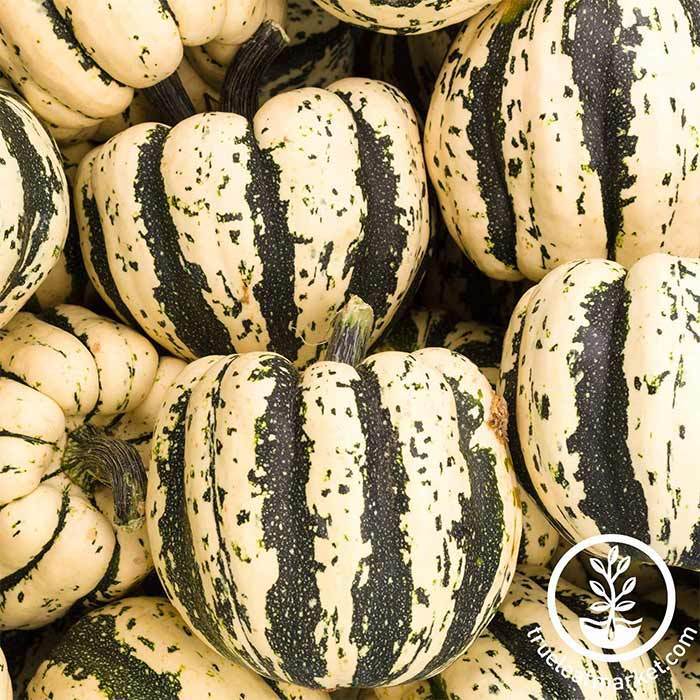How to grow delicata squash – an expert guide to sowing seeds and caring for plants
Delicata is a winter squash with a difference
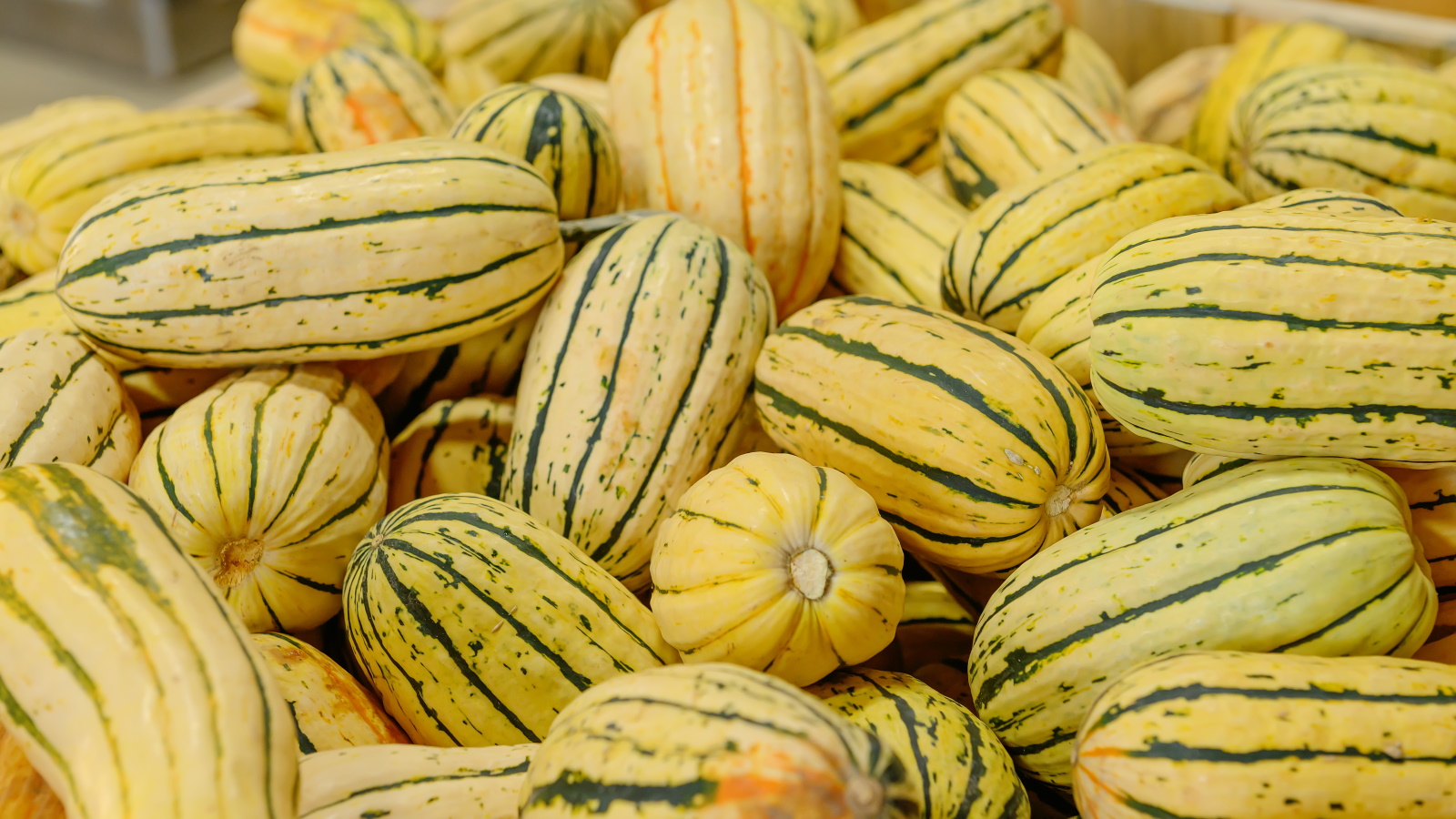

Delicata is a unique variety of winter squash that grows oblong in shape, around three inches wide and six inches long. Featuring edible cream-colored skin with green stripes and orange flesh, delicata is a popular squash that is delicious when roasted or baked.
Also known as sweet potato squash or peanut squash, it is very simple to grow too. When I grew squashes for chefs, delicata was one of the first added to each year’s growing list. While several different squashes were grown every year, delicata was perennially requested thanks to its sweet and buttery flavor.
If you are new to growing squash, or simply looking for new flavorful and exciting types of squash to grow in your vegetable garden, then here is our guide to growing and caring for delicata squash.
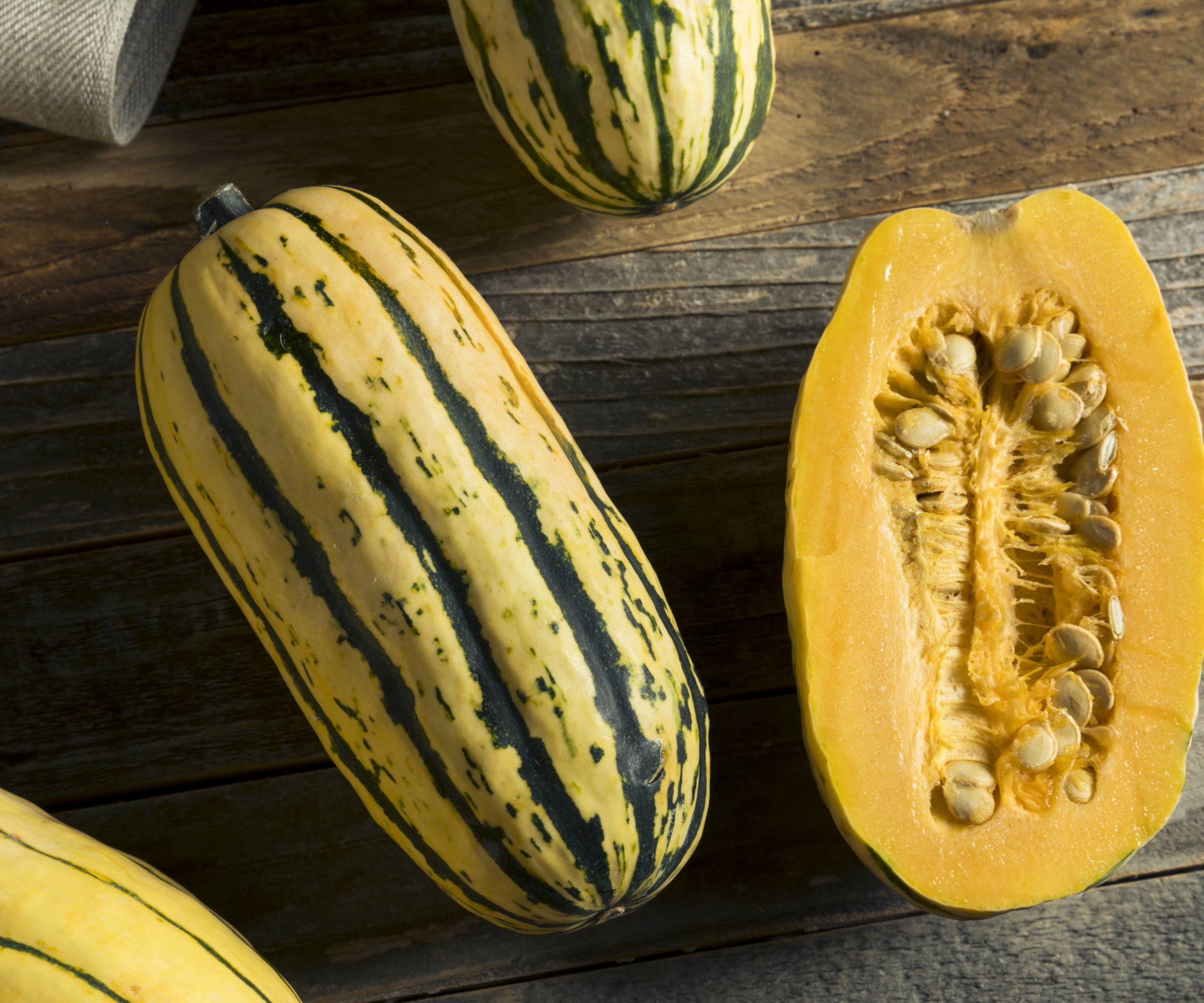
Delicata squash are native to North and Central America
What is a delicata squash?
Delicata is a variety of winter squash, however, it has a major difference from other popular winter squashes such as butternut squash or acorn squash. This comes in the form of a thinner edible skin, more similar to a summer squash than a winter type.
While this means a reduced storage life, it does add to the flavor. If you fancy growing delicata squash you can purchase a young plant to add to the vegetable garden or the crop is simple to grow from seeds.
How to grow delicata squash from seeds
Can you grow delicata squash from seed both indoors and outdoors? The answer is yes. These annual crops can be sown directly into their growing position, or started indoors to plant out later.
The plants need around 100 days to mature, so where you sow will depend on your climate and the last frost date in your US hardiness zone. Growers in cooler climates with shorter growing seasons will benefit from starting indoors and planting outside after the last frosts.
Design expertise in your inbox – from inspiring decorating ideas and beautiful celebrity homes to practical gardening advice and shopping round-ups.
Sow seeds indoors
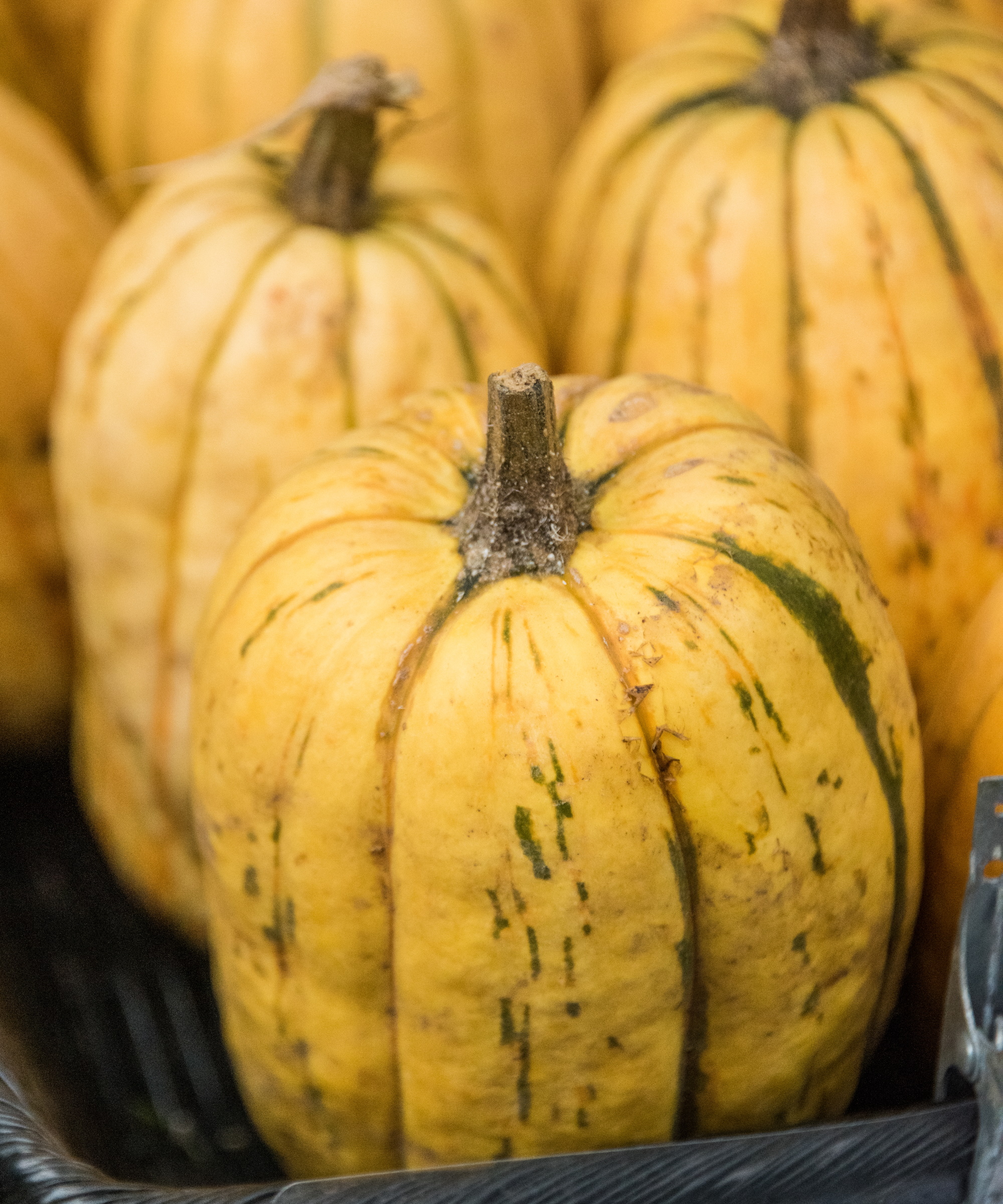
Delicata squash is a simple crop to grow
When I grew delicata squash for chefs, I sowed seeds indoors due to my cooler climate in the north of England. I sowed the vegetable seeds indoors around a month before my last frost date.
Sow seeds at least a half-inch deep in large modules or small pots filled with a good soil to start seeds in, such as this organic seed potting soil available at Amazon. Using biodegradable pots, such as these biodegradable three-inch pots at Walmart, can help to reduce any stress on the plants when transplanting seedlings into the ground.
The seeds want to be germinated at temperatures of 65–70°F in a greenhouse or on a bright and warm windowsill and to be kept moist, but not waterlogged, as they germinate. Plant the seedling outside when they are a few inches tall, large enough to handle, and after the last frosts.
Sow seeds outdoors
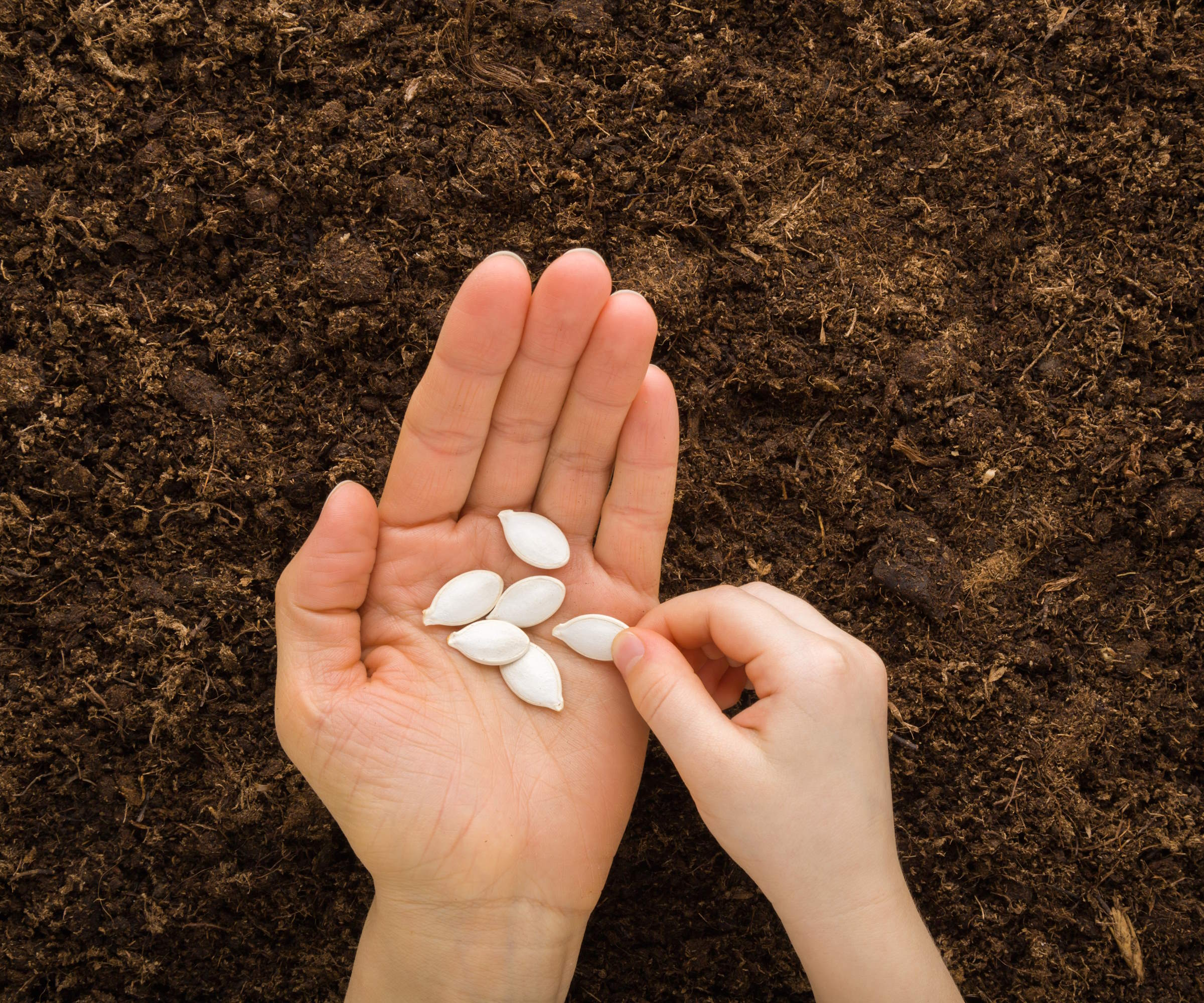
Delicata squash can be grown from seeds bought from stores or saved from the previous year's crop
Growers in warmer climates that have over 100 days of frost-free growing conditions can sow seeds outdoors directly into the soil.
You can warm up soil a bit quicker, or sow slightly earlier outdoors and protect the seeds, by using horticultural fleece or cloches.It is best to sow outdoors once the soil temperature is consistently above 70°F and to sow the seeds on small mounds, or hills.
The hills want to be 6-8 inches tall, round with flat tops, and spaced at least six feet apart. Sow 4-5 seeds an inch deep into each mound and keep the soil moist. When the seedlings have appeared, thin all but the two strongest plants per hill.
The best location for growing delicata squash
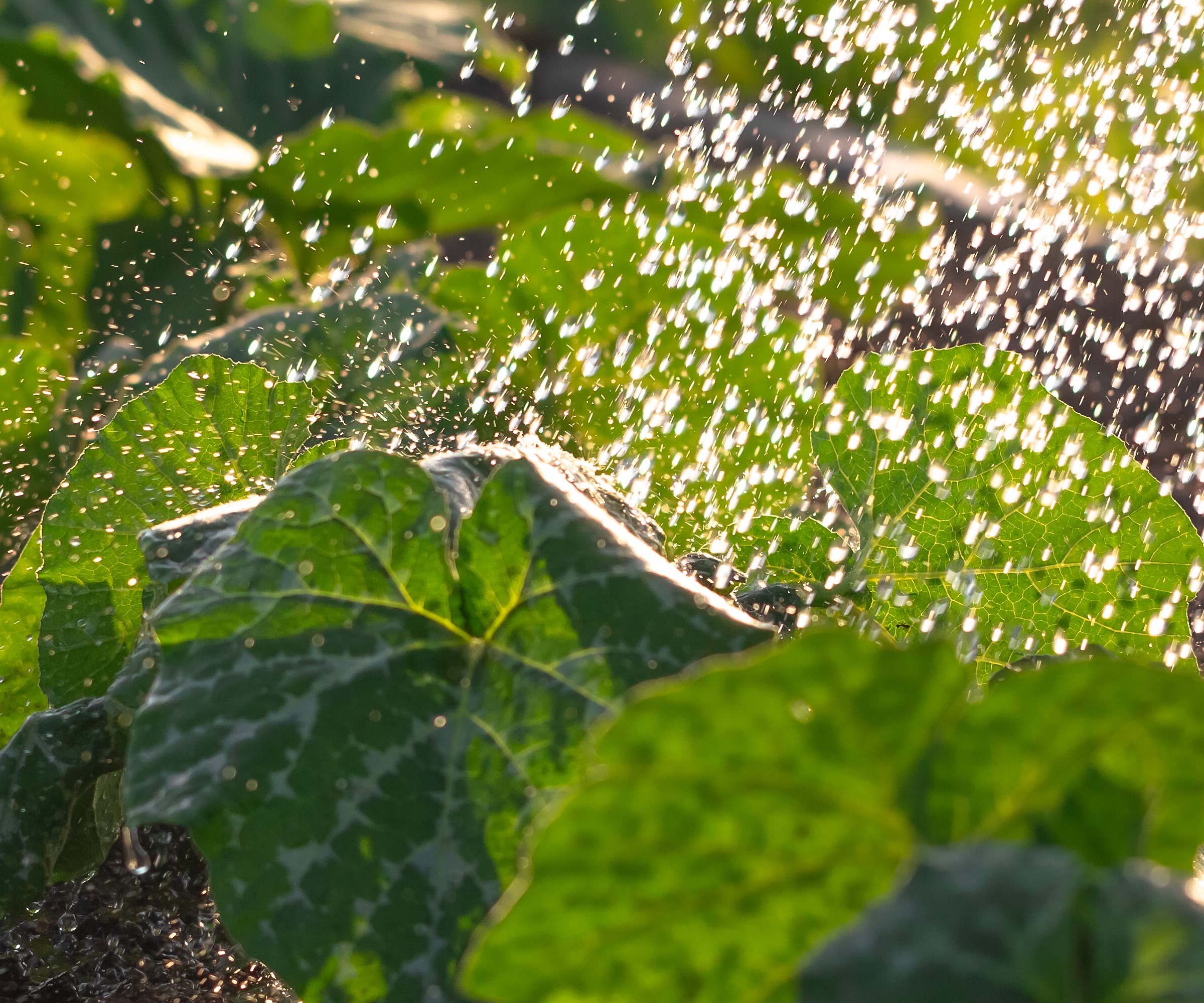
Grow delicata squash in full sun and take care to avoid overhead watering
There is no escaping the fact that delicata squash, along with any other squash, will do their best in full sun. They are not vegetables to grow in shade and want at least 6-8 hours of direct sun every day. Plants will struggle without enough sun and it will increase the risk of plants succumbing to fungal diseases.
For success with delicata squash, a rich and fertile soil type is also key. Add compost or well-rotted manure to the planting site and also mix some well-balanced fertilizer into the planting hole - such as this organic all purpose plant food at Walmart. Providing lots of essential nutrients will ensure plants get off to a great start.
As well as getting the light and soil correct, you do need to ensure plants have the room they need. Delicata squash plants can spread 4-6 feet, depending on the variety and do not want to be too congested. A lack of air circulation can also increase the susceptibility to diseases, such as powdery mildew.
Caring for delicata squash plants
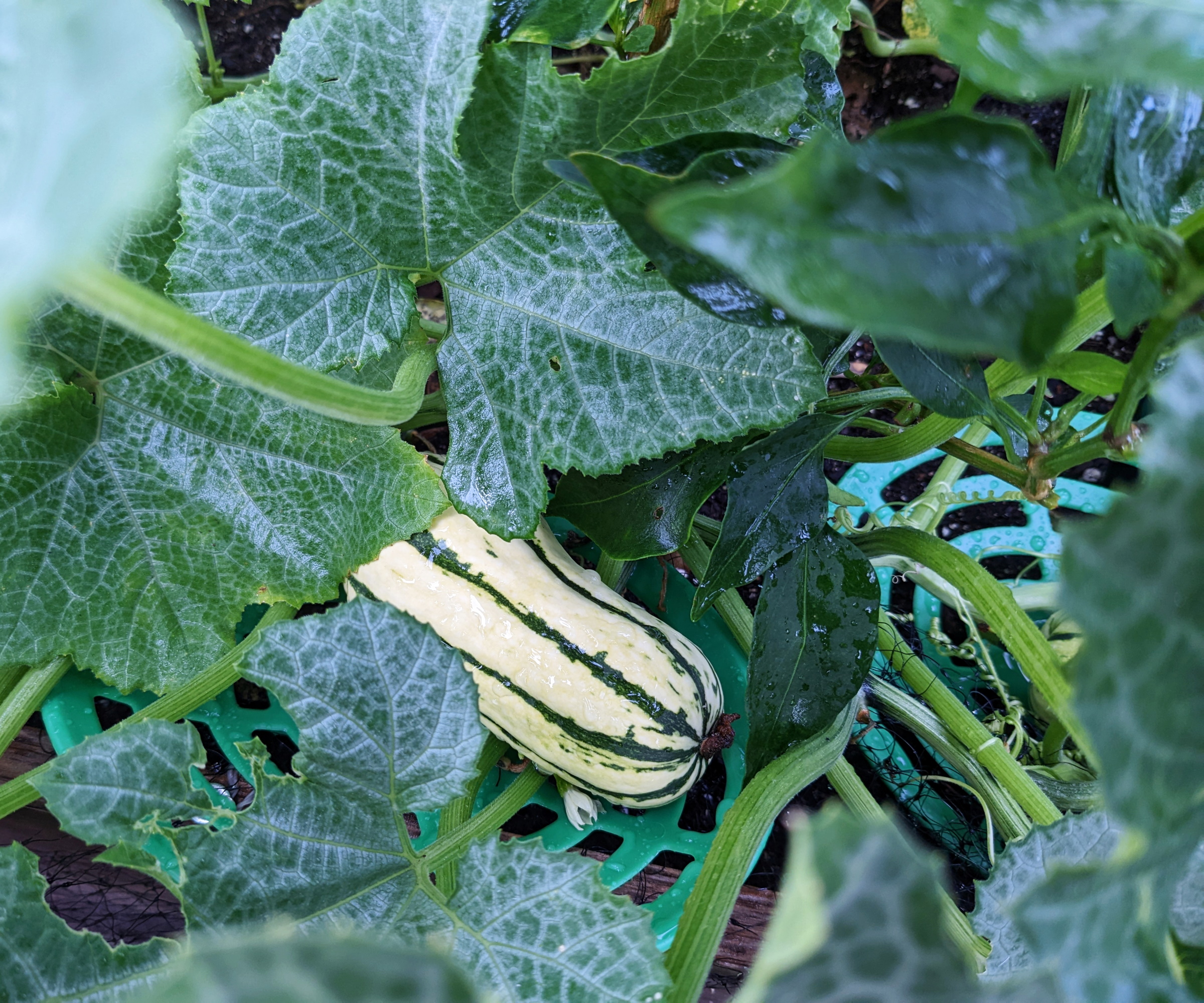
Grow delicata squash to harvest in fall
Regular watering is important as delicata squashes are hungry plants and want consistent moisture throughout the growing season. Giving plants 1-2 inches of deep watering each week is recommended, with deeper and less-regular watering more beneficial to plants than a little-and-often approach. As for how to water plants, avoid overhead watering as this can cause diseases and always aim to apply the moisture to the soil around the base of plants.
A lack of water or fertilizer can be prime reasons that squash leaves turn yellow. As well as watering, feeding plants regularly will help the plant thrive and grow fruits. When the plants start flowering, feeding with a liquid fertilizer high in phosphorus and potassium will help to develop fruits. One example of a good feed to use is tomato and vegetable fertilizer available at Amazon, or alternatively any liquid feed designed for growing tomatoes, or a seaweed fertilizer, can be used. A homemade option is to make comfrey fertilizer, which is a good method of making a DIY tomato fertilizer that can also be used on many vegetables.
Squashes can suffer from fungal diseases such as mildew and wilt, however, providing good air circulation and drainage, along with not watering from above, can prevent these issues. Any leaves that show signs of damage or disease are best removed with clean and sharp pruning shears to prevent issues spreading. You can get disease-resistant varieties of delicata squash, such as ‘Cornell's Bush Delicata’.
The likes of squash vine borers, squash bugs, and cucumber beetles can cause issues for all types of squashes, zucchini, and pumpkins. The pests can be manually removed - squash vine borders will need to be cut out from affected stems - or eggs on the underside of leaves can be squashed. Organic pesticides can be applied to combat pests, such as Bacillus thuringiensis (Bt) that is also available at Amazon.
Shop delicata squash varieties
How to grow delicata squash in a container
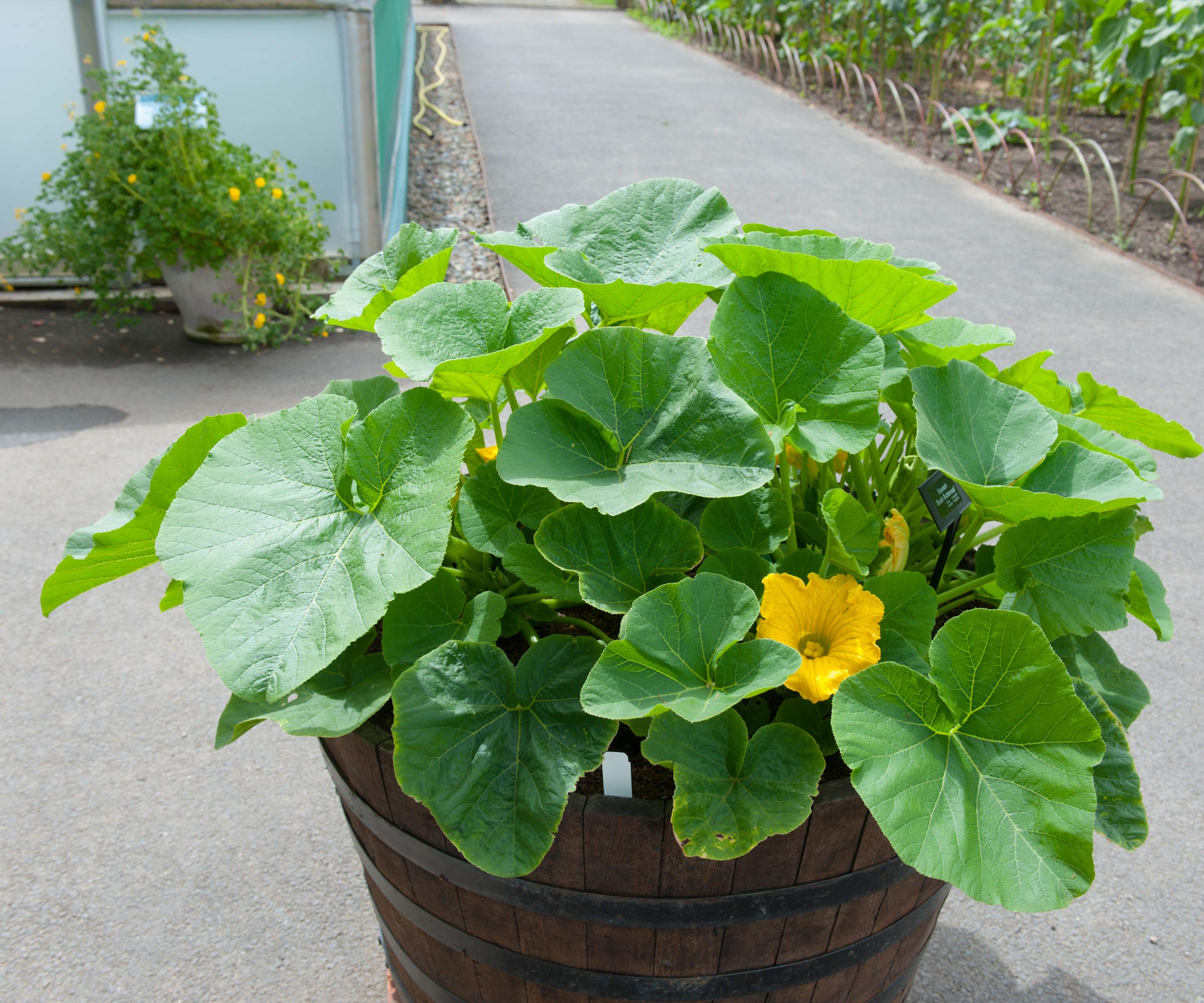
Grow delicata squash in large containers on a deck or patio
You may not be blessed with lots of ground space and wonder, can you grow delicata squash in a container? Well, the good news is that the plants can grow as part of a vegetable container garden. Growing the crop in pots or grow bags means you can place the container in the sunniest spot in your backyard.
Any container needs to be large and at least 14 inches wide and 12 inches tall to give the plant’s roots room to develop. The planter needs to have holes for drainage and be filled with a loose and well-draining potting soil, such as this organic potting mix at Burpee.
Plant one delicata squash per container and give the plant space to spread out. Keep it consistently moist and regularly check the moisture levels a few inches down in the soil when watering plants in containers. You can do this with your finger or a soil moisture meter, available at Amazon. Watering and feeding plants in containers throughout the growing season is essential to getting a good harvest of delicata squash in a container.
To maximize the ground space in the vegetable garden, growing squash vertically can reduce the area needed for such spreading vegetables. The plants can be easily trained up a vegetable garden trellis or arch and growing vertically helps with air circulation and the even development of fruits. Delicata squash is an ideal variety to grow vertically, while you can also do it with the likes of acorn, butternut, and spaghetti squash. It is not just squash, as there are benefits to growing zucchini vertically too.

Drew has worked as a writer since 2008 and was also a professional gardener for many years. As a trained horticulturist, he worked in prestigious historic gardens, including Hanbury Hall and the world-famous Hidcote Manor Garden. He also spent time as a specialist kitchen gardener at Soho Farmhouse and Netherby Hall, where he grew vegetables, fruit, herbs, and cut flowers for restaurants. Drew has written for numerous print and online publications and is an allotment holder and garden blogger. He is shortlisted for the Digital Gardening Writer of the Year at the 2025 Garden Media Guild Awards.
